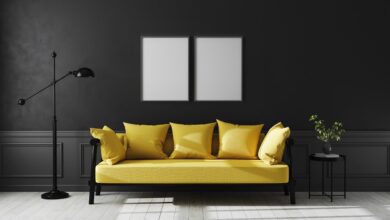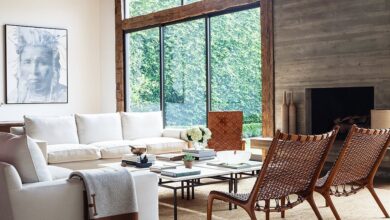20 Ways of Power of Color :Choosing the Right Pallet for Your Home Design

Choosing the Right Pallet for Your Home Design can have a significant impact on the overall atmosphere and mood of each room. Here are 20 ways to harness the power of color and Choosing the Right Pallet for Your Home design which create a harmonious and inviting living space:
Calming Blues:
Choosing the Right Pallet for Your Home design ,Use shades of blue in bedrooms and living rooms to promote relaxation and tranquility.
Energizing Reds:
Incorporate red accents in areas where you want to create a sense of energy and excitement, such as dining rooms or home offices.
Serene Greens:
Green hues are ideal for spaces where you want to bring the outdoors in, such as bathrooms or reading nooks.
Soothing Neutrals:
Neutral tones like beige, gray, and taupe can create a timeless and sophisticated atmosphere throughout your home.
Vibrant Yellows:
Choosing the Right Pallet for Your Home Design , a Bright yellow accents can add a cheerful and sunny vibe to kitchens and playrooms ,while Choosing the Right Pallet for Your Home
Invigorating Oranges:
Choosing the Right Pallet for Your Home Design ,Use orange hues sparingly to add warmth and playfulness to areas like entryways or accent walls.
Tranquil Purples:
Choosing the Right Pallet for Your Home design , Shades of purple, such as lavender or lilac, can create a sense of tranquility in bedrooms or meditation spaces.
Cozy Browns:
Brown tones can evoke a feeling of warmth and comfort, making them perfect for living rooms or cozy reading corners.
Refreshing Whites:
Opt for crisp white walls to create a clean and airy ambiance in any room.
Elegantly Grays:
Gray shades can be sophisticated and versatile, working well in bedrooms, kitchens, or home offices.
Earthy Tones:
Use earthy colors like terracotta, rust, or olive green to bring a natural and grounding element to your home.
Playful Pinks:
By Choosing the Right Pallet for Your Home design , Pink hues can be used to create a soft and romantic atmosphere in bedrooms or nurseries.
Classic Blacks:
Incorporate black accents to add drama and elegance to any room, whether through furniture, fixtures, or accessories.
Cheerful Pastels:
Pastel shades, such as mint green, baby blue, or pale pink, can create a light and airy ambiance in any space.
Bold Jewel Tones:
Use rich jewel tones like emerald green, sapphire blue, or deep purple to add a touch of luxury and opulence to your home.
Monochromatic Schemes:
Create depth and visual interest by using varying shades of the same color throughout a room.
High-Contrast Combinations:
Combine light and dark colors to create striking contrasts, such as black and white or navy and gold.
Complementary Colors:
While Choosing the Right Pallet for Your Home design ,Choose colors that are opposite each other on the color wheel, such as blue and orange or purple and yellow, to create a vibrant and dynamic look.
Analogous Harmonies:
Select colors that are next to each other on the color wheel, like blue and green or orange and red, to create a harmonious and cohesive feel.
Personalize with Accents:
Add personal touches and pops of color through accessories like artwork, cushions, rugs, and curtains.
Remember, the power of color lies in its ability to evoke emotions and set the tone for a space. Consider the purpose of each room and the atmosphere you want to create when choosing your color palette.
Certainly! Here are some more tips for choosing the right color palette for your home:
Consider Lighting:
Keep in mind that natural and artificial lighting can significantly affect how colors appear in a room. Test your chosen colors under different lighting conditions to ensure they achieve the desired effect.
Balance Warm and Cool Tones:
Achieve visual balance by incorporating both warm and cool colors in a room. For example, pair warm earthy tones with cool blues or greens.
Use Color Psychology:
Choosing the Right Pallet for Your Home design , Familiarize yourself with color psychology to understand how different colors can influence mood and emotions. For instance, yellow is associated with happiness and energy, while gray can create a sense of calm.
Take Inspiration from Nature:
Nature provides a rich palette of colors to draw inspiration from. Consider the hues found in landscapes, flowers, or seascapes and incorporate them into your home’s color scheme.
Think About Flow:
Maintain a sense of visual flow throughout your home by using a consistent color palette. This doesn’t mean every room should have the same colors, but rather that there should be a cohesive connection between adjacent spaces.
Use Accent Colors:
Select a few accent colors to add pops of interest throughout your home. These can be bolder or contrasting shades that complement the main color palette.
Consider the Room’s Purpose:
Different rooms serve different purposes, so tailor your color choices accordingly. For example, energizing colors like red or orange work well in active spaces like the kitchen or home gym, while serene blues are better suited for bedrooms or reading areas.
Take Cues from Existing Elements:
Consider the colors of existing elements in your home, such as flooring, furniture, or architectural features. Choose a color palette that complements and harmonizes with these elements.
Test Paint Samples:
Before committing to a color, purchase small paint samples and apply them to your walls. Observe how they look at different times of the day to ensure they match your vision.
Create Visual Interest with Texture:
While Choosing the Right Pallet for Your Home Design ,If you prefer a more monochromatic color scheme, add depth and interest through texture. Incorporate different textures through fabrics, wall finishes, or materials to create a visually appealing space.
Consider the Ceiling:
In Choosing the Right Pallet for Your Home Design ,Don’t forget about the fifth wall—the ceiling! Experiment with colors other than traditional white to add an unexpected element to a room.
Use Color to Define Spaces:
In open floor plans, use color strategically to define different areas. For instance, paint an accent wall or use a different color scheme for the dining area to distinguish it from the living space.
Personalize with Your Preferences:
Ultimately, your home should reflect your personal taste and preferences. Choose colors that you love and that resonate with you, creating a space that feels like a true reflection of your style.
Remember, these guidelines are meant to inspire and assist you in choosing a color palette for your home. Trust your instincts, and don’t be afraid to experiment and have fun with color to create a space that you’ll enjoy for years to come.
Certainly! Here are a few more tips to help you choose the right color palette for your home:
Consider the Size of the Room:
Keep in mind that colors can visually impact the perceived size of a room. Lighter colors can make a space feel more spacious, while darker colors can create a cozy and intimate atmosphere.
Harmonize with Existing Décor:
Take into account the furniture, textiles, and décor items you already have in each room. Choose colors that harmonize with these existing elements to create a cohesive and well-designed space.
Pay Attention to Undertones:
While Choosing the Right Pallet for Your Home Design , Colors have undertones that can influence their appearance. Some whites have warm undertones, while others have cool undertones. Consider the undertones of your chosen colors to ensure they work harmoniously together.
Seek Inspiration from Design Resources:
While Choosing the Right Pallet for Your Home Design ,Browse home décor magazines, websites, and social media platforms like Pinterest or Instagram to gather inspiration for color combinations and palettes that resonate with your style.
Experiment with Accent Walls:
If you’re hesitant about committing to a bold color for an entire room, try using it as an accent wall. This can add a vibrant focal point while keeping the overall color scheme more neutral.
Use Color to Highlight Architectural Features:
Highlight the unique architectural features of your home by using color strategically. For example, paint trim, moldings, or built-in shelves in a contrasting or complementary color to make them stand out.
Consider the Mood and Ambiance:
Choosing the right color palette for your home design , Different colors evoke different moods and feelings. Determine the mood you want to create in each room—whether it’s calm and serene, energetic and vibrant, or cozy and inviting—and select colors that align with that desired ambiance.
Test Color Combinations:
Choosing the Right Pallet for Your Home design ,When choosing multiple colors for a room, it’s essential to test their compatibility. Paint swatches or create digital mood boards to see how the colors work together before making a final decision.
Seek Professional Advice:
while Choosing the Right Pallet for Your Home Design ,If you’re unsure about color selection or need guidance, consider consulting with an interior designer or color specialist who can provide expert advice and help you create a cohesive color palette.
Take Inspiration from Artwork:
If you have a favorite piece of artwork, use it as a starting point for your color palette. Draw colors from the artwork and incorporate them into your room’s design for a harmonious and cohesive look.
Pay Attention to Trends, But Trust Your Taste: While it’s helpful to be aware of current color trends, remember that trends come and go. Ultimately, choose colors that you love and that resonate with your personal style and preferences.
Consider the Emotional Connection:
While Choosing the Right Pallet for Your Home Design ,Colors can evoke personal emotions and memories. Choose colors that have a positive emotional impact on you and create a space that feels inviting, comforting, and inspiring.
Create a Consistent Color Flow:
While Choosing the right palette for your home design , For a cohesive and harmonious home, create a consistent color flow from room to room. This doesn’t mean using the same colors everywhere, but rather selecting colors that complement each other and create a sense of visual continuity.
Remember, choosing a color palette for your home is a creative process, and there are no hard and fast rules. Trust your instincts, take your time, and enjoy the process of transforming your living spaces with the power of color. choosing the right pallet for your home elevation











